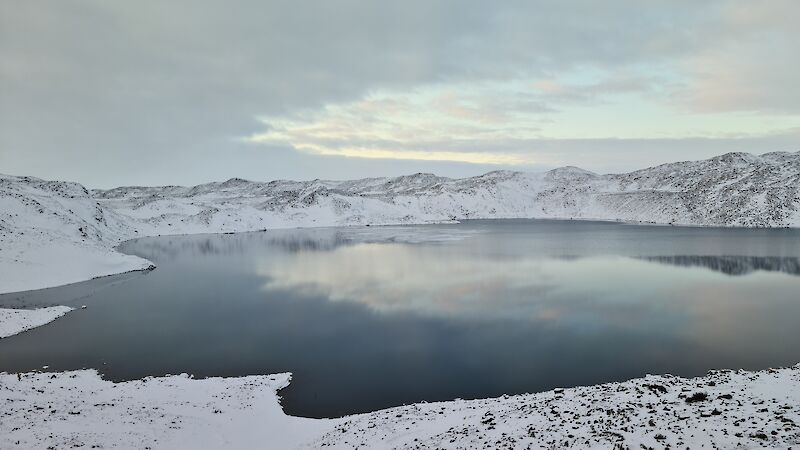Antarctic expeditioners have witnessed a rare event - ice forming on a super-salty lake near Davis research station.
Picturesque Deep Lake, in the Vestfold Hills, is a land-locked 'hypersaline' lake that contains about 270 grams of salt per litre (about 45 teaspoons).
Seawater, by comparison, contains about 35 grams of salt per litre.

The lake is 36 metres deep and sits about 50 metres below sea level. It has no outflow, and is filled only by snowmelt and wind-driven snow. As a result, it remains extremely salty and rarely freezes.
Since 1977, scientists and expeditioners have been monitoring the water level, and the water temperature since 2016.
This year the lake hit a record high water level in January, and a record low temperature of -18°C in August.
Water level measurements are made using a gauge pole installed in the lake at a known depth. This year, the lake level was about 1.5 metres higher then when it was first measured in 1977.
Records show the lake depth has varied between about 50 and 100 cm over the past 40 years, while the surface water temperature varies between -15°C in winter and 9C° in summer.
Deep Lake is about nine kilometres from Davis research station and is a popular day trip destination for expeditioners.






